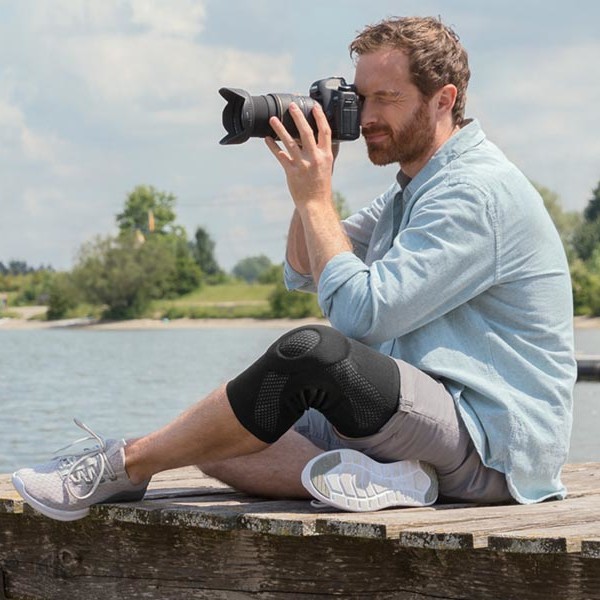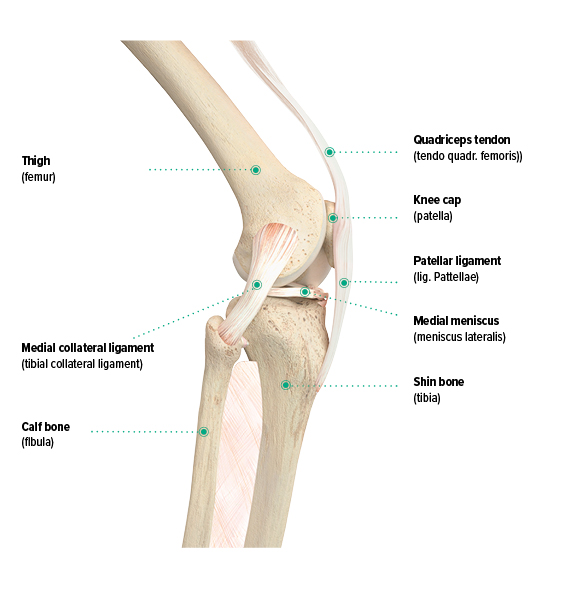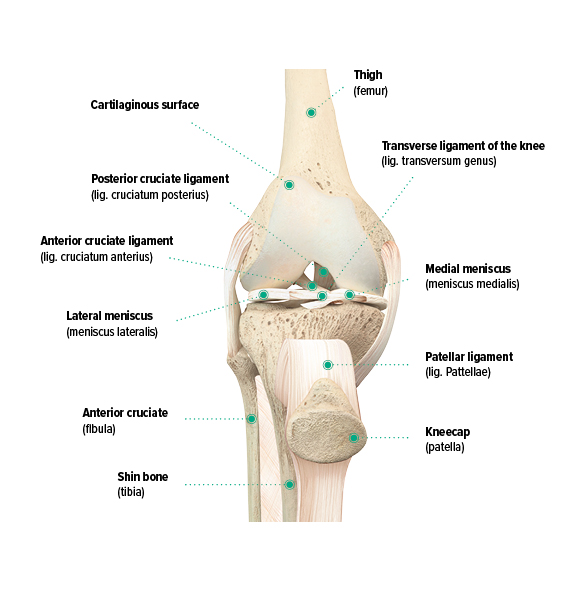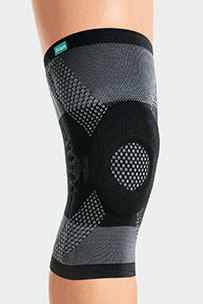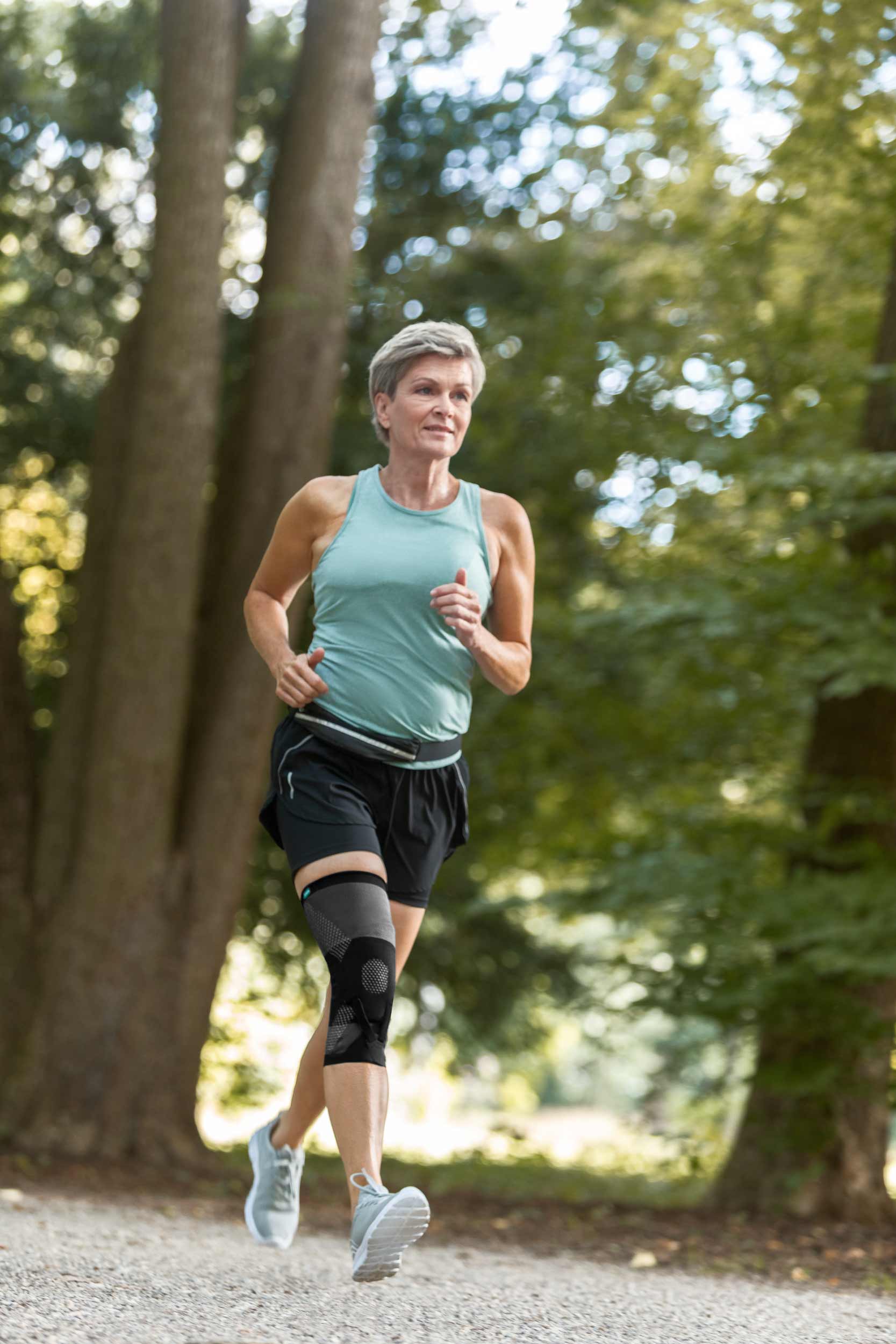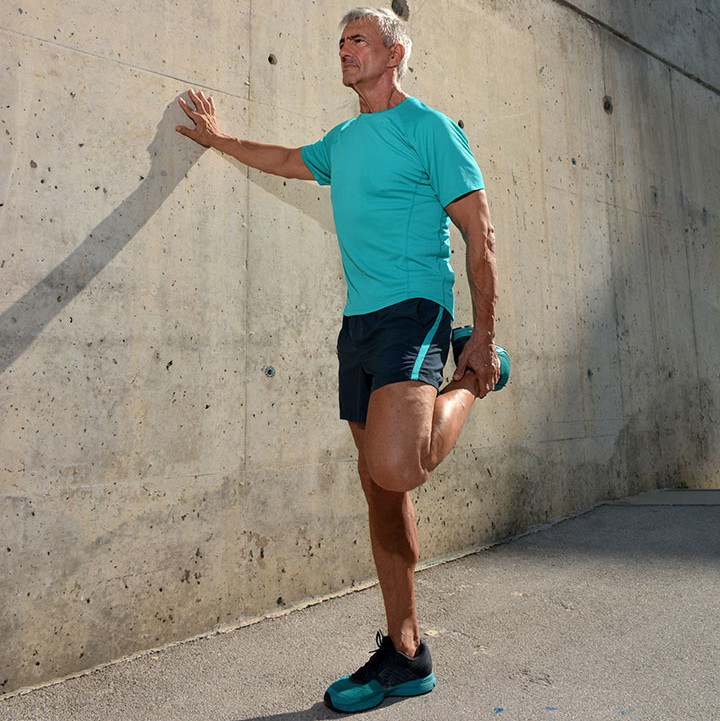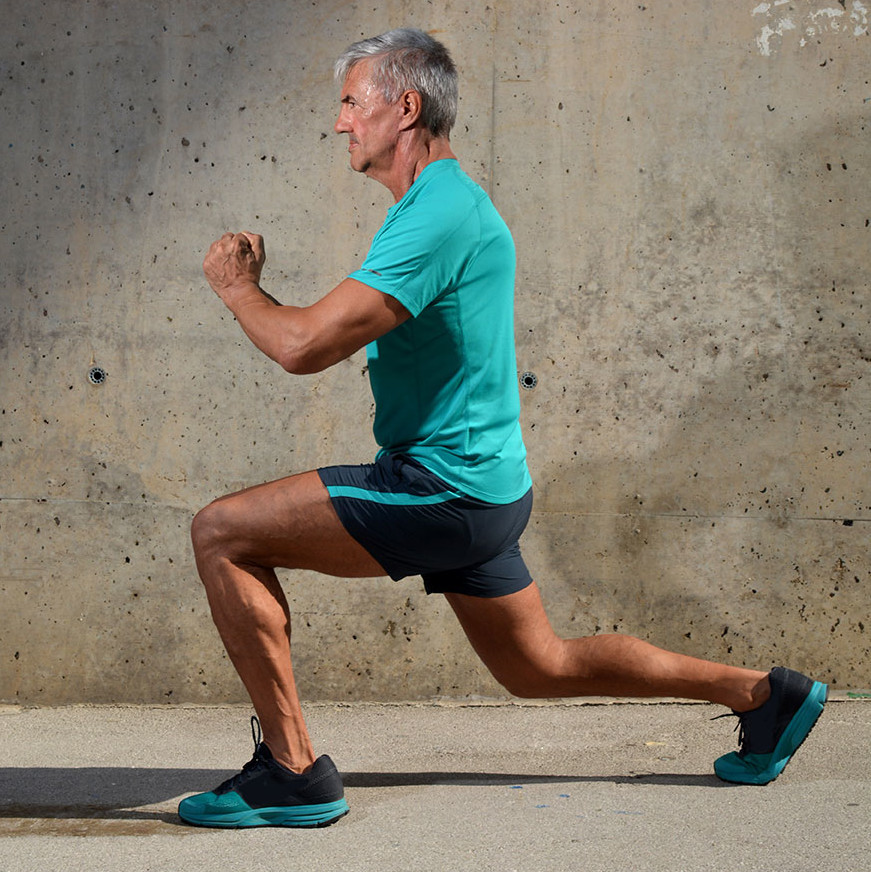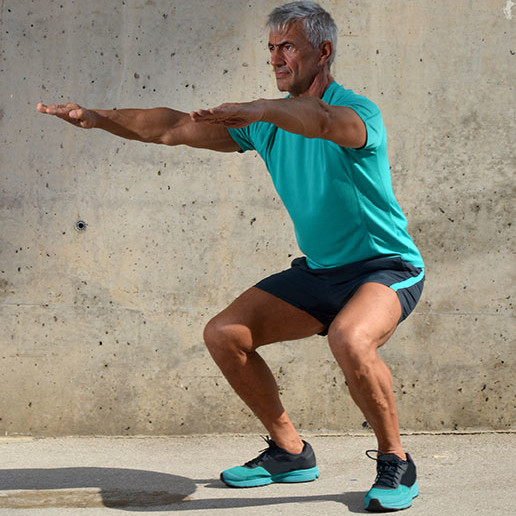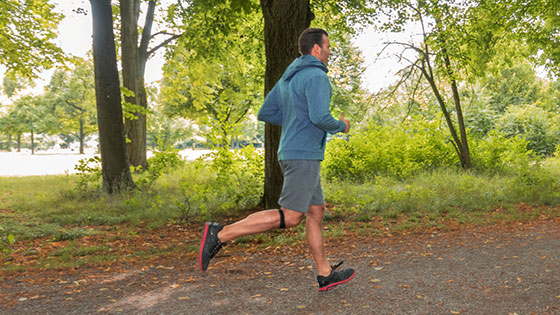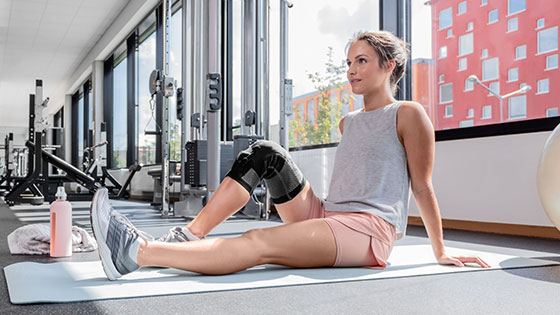During or after strain
Patella tip syndrome (jumper’s knee)
Patella tip syndrome is an irritation of the patellar tendon in the area of the lower insertion of the kneecap, usually caused by excessive strain. In the beginning, pain typically doesn't occur during strain, but instead after. The painful area is right underneath the kneecap and is very sensitive to pressure.
More about patella tip syndrome
Patellofemoral pain syndrome
It is often impossible to precisely identify what causes patellofemoral pain syndrome. Pain usually occurs behind the kneecap, but it can also radiate to the surrounding areas. It primarily occurs during sporting activities with the knee joint being subjected to a high degree of strain, when going downhill, climbing the stairs and after extended periods of sitting down.
More about patellofemoral pain syndrome
Patellar dysplasia
The kneecap has an asymmetrical shape in cases of patellar dysplasia. This means it wears the cartilage layer at the back of the patella unevenly. This is usually a congenital malformation that causes pain on exertion, such as walking, bending, sitting down or getting up.
Patellar lateralisation
Patellar lateralisation is a misalignment where the kneecap has shifted to the side and no longer moves smoothly in its dedicated guidance channel. The uneven load-bearing results in increased wear of the joint cartilage at the back of the patella. Pain is often noticed for the fist time when going downhill or downstairs.
High-riding patella (patella alta)
In cases of high-riding patella, the kneecap has shifted upwards, thus exerting increased tensile force on the patellar tendon when the knee is bent. A high-riding patella can be congenital or caused by trauma, a tear of the patellar tendon or patellar luxation. A high-riding patella manifests with significant pain that increases when climbing the stairs or pursuing intense sporting activities.
Osteoarthritis of the patella (retropatellar arthrosis)
Osteoarthritis of the patella is a condition of wear related to the kneecap and the trochlea. It is caused by wear of the cartilage under the patella and can lead to an audible crunching during movement. Pain typically occurs first when climbing the stairs or going uphill.


